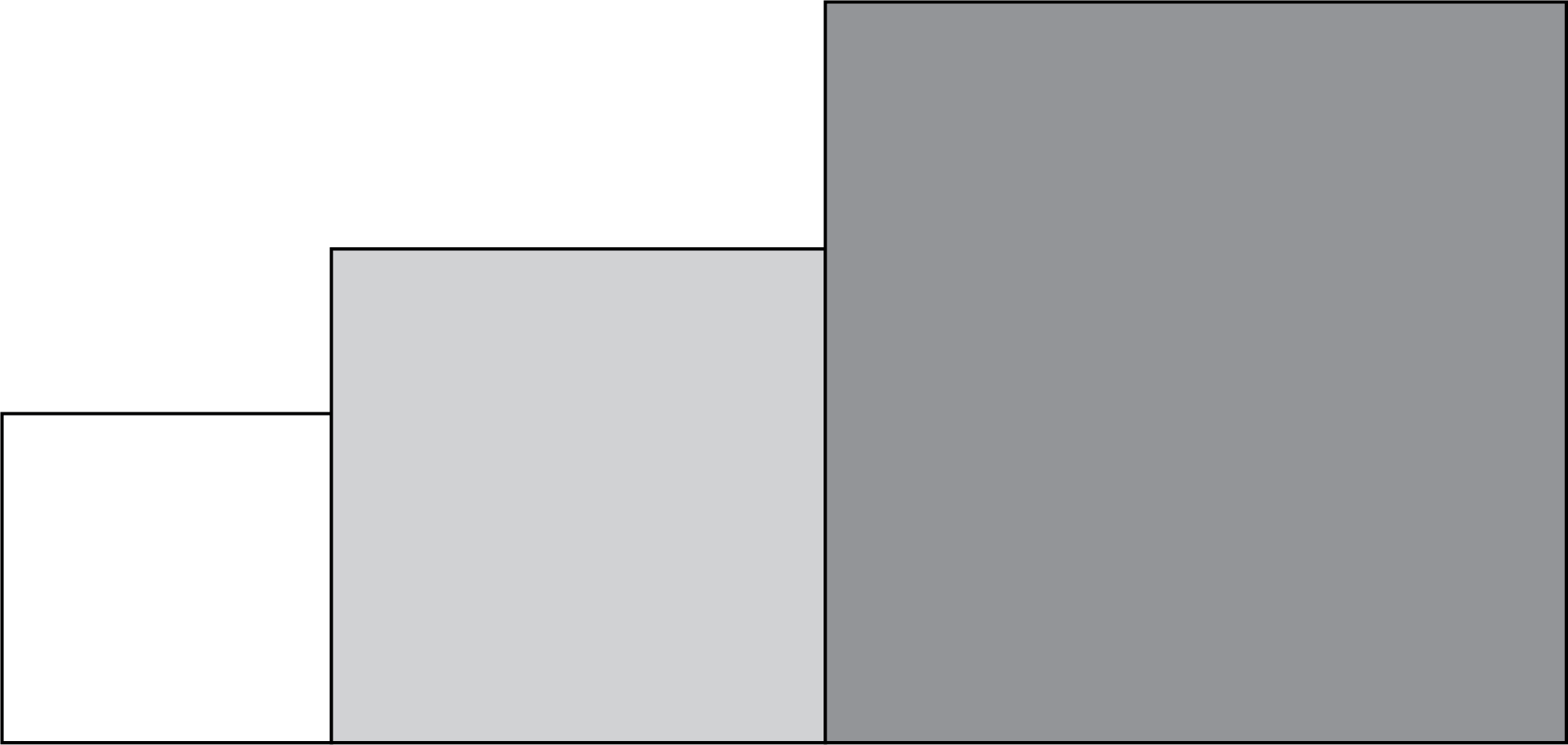

The three squares \(ABCD\), \(AEFG\), and \(AHJK\) overlap as shown in the diagram.

The side length of each square, in centimetres, is a positive integer. The area of square \(AEFG\) that is not covered by square \(ABCD\) is \(33\text{ cm}^2\). That is, the area of the shaded region \(BEFGDC\) is \(33\text{ cm}^2\). If \(DG = GK\), determine all possible side lengths of each square.
Let \(AD = x\) cm and \(DG = y\) cm. Therefore \(GK = DG = y\) cm.

Also, since the side length of each square is an integer, \(x\) and \(y\) are integers.
The shaded region has area \(33\text{ cm}^2\). The shaded region is equal to the area of the square with side length \(AG\) minus the area of the square with side length \(AD\).
Since \(AD = x\) and \(AG = AD + DG = x+y\), we have $$\begin{align} 33 & = (\text{area of square with side length $AG$}) - (\text{area of square with side length $AD$}) \\ &=(x+y)^2 - x^2\\ &= x^2 + 2xy + y^2 - x^2\\ &= 2xy + y^2\\ &= y(2x +y) \end{align}$$ Since \(x\) and \(y\) are integers, so is \(2x+y\). Therefore, \(2x+y\) and \(y\) are two positive integers that multiply to give \(33\). Therefore, we must have \(y = 1\) and \(2x+y = 33\), or \(y = 3\) and \(2x+y = 11\), or \(y = 11\) and \(2x+y = 3\), or \(y = 33\) and \(2x+y = 1\). The last two would imply that \(x<0\), which is not possible. Therefore, \(y=1\) and \(2x +y = 33\), or \(y = 3\) and \(2x+y = 11\).
When \(y=1\) and \(2x +y = 33\), it follows that \(x=16\). Then square \(ABCD\) has side length \(x=16\) cm, square \(AEFG\) has side length \(x+y=17\) cm, and square \(AHJK\) has side length \(x+2y=18\) cm.
When \(y=3\) and \(2x +y = 11\), it follows that \(x=4\). Then square \(ABCD\) has side length \(x=4\) cm, square \(AEFG\) has side length \(x+y=7\) cm, and square \(AHJK\) has side length \(x+2y=10\) cm.
Therefore, there are two possible sets of squares. The squares are either \(16\) cm \(\times\) \(16\) cm and \(17\) cm \(\times\) \(17\) cm and \(18\) cm \(\times\) \(18\) cm, or \(4\) cm \(\times\) \(4\) cm and \(7\) cm \(\times\) \(7\) cm and \(10\) cm \(\times\) \(10\) cm. Each of these sets of squares satisfies the conditions of the problem.